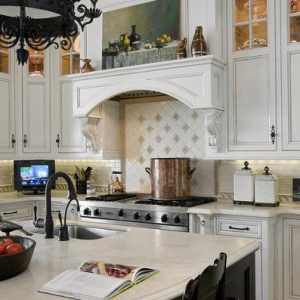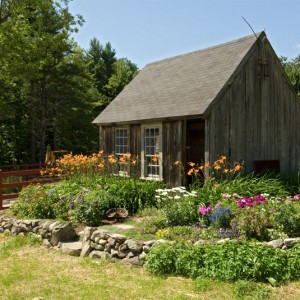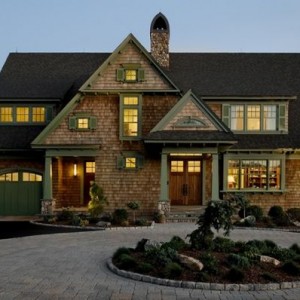Sustainable architects in New England
See our blog for new projects, announcements, and all things TMS Architects.Luxe Energy-Efficient Kitchen Appliances for your Passive Kitchen

Sustainable homeowners are smart homeowners. After all, wouldn’t you rather spend your money on a weekend getaway or a fun day out with your family than waste it on your electrical bill? Upgrading to energy-efficient appliances in your kitchen can mean less waste, less resources consumed, more peace of mind, and more money in your pocket.
 Read More
Read More
Upcycled Materials Great for Insulating Sustainable Homes
Homeowners are increasingly committing to living greener more eco-friendly lifestyles, and that extends to how they build and remodel their homes. If sustainability is a concern for your home, you will want to look into eco-friendly insulation materials.
 Read More
Read More
A Sustainable Garden Loves Back: Planning Your Own

Looking for a way to give back to nature while receiving the benefits of flowers, plants, and vegetables? Growing your own plants and food is an important step toward leading a more sustainable lifestyle. Switching over to a sustainable gardening style goes a really long way in building a garden that you can then admire, eat from, and enjoy. To help you avoid getting lost on the way, we have some information to help grow your sustainable garden into a feature you can be proud of.
 Read More
Read More
Cedar Siding Shingles Provide a Rustic, Country Look

The photo we pinned of the exterior of our project called the New Hampshire Hilltop Home has been pinned to multiple Pinterest boards. The well-liked pin has us pondering wooden shingles, and the way they exude both a historical and modern look.
 Read More
Read More
Utilize Rainwater Harvesting for Sustainable Living
Saving water (and money) is easy with a residential rainwater harvesting system. Rainwater is great for watering all gardens and plants, including edible ones. The two most common home rainwater harvesting systems are rain barrels and cisterns. Rain barrels are easy to install and use and do not require any type of permit. Large cistern systems that hold more than 100 gallons and involve pumps will warrant the help of a professional to obtain the proper permits.
 Read More
Read More
Sustainable Architecture: Facing Carbon Head-On in the Future
The concept of sustainability dates back to the 1970s when the energy crisis, uncontrolled pollution and environmentally damaging materials made the world realize we couldn’t depend on fossil fuels forever. Fortunately, new studies have unveiled the benefits of renewable resources, recycling existing materials and adopting sustainable practices to help turn things around, and in industries such as organic architecture, professionals of all stripes are trying to do their part to better the world.
 Read More
Read More
Sustainable Architecture: Integrating Bamboo Into a Home
Bamboo is making a greater appearance in modern home design as conscientious owners and sustainable architects are learning more about this material’s great sustainability factors.
As the fastest growing wood producing plant in the world, bamboo is tougher than steel when it comes to tensile and compression strength. It’s also harder than red oak and maple, and isn’t as susceptible to warping from temperature or humidity as conventional wood products. Add to these factors rapid growth, improved air quality and breathtaking beauty, bamboo is truly a favorite material in sustainable architecture.
 Read More
Read More
Sustainable Architecture: Can a Building Make Its Occupants Happy
Our earliest ancestors understood the concept of sustainable architecture without realizing there was a name for it. They set up home in savannas, woodlands and caverns that provided the proper amount of natural light, protection from weather extremes and plenty of plants and vegetation to survive and barter. Unfortunately, centuries passed before we began to consider these benefits of biophilic architecture.
 Read More
Read More
Sustainable Architecture 101: The Utility of Salvaged Wood
An important facet of sustainable architecture includes using building materials that are not harmful to the environment, as well as reusing materials whenever possible. Salvaged wood can be upcycled and used in many applications that meet both of those criteria. Considering the beauty, uniqueness and historical quality of reclaimed wood, you should not overlook its usefulness.
 Read More
Read More
Upgrading a Historic Home with Energy-Efficient Lighting
In an era where energy-efficiency is at the forefront of everyone’s minds, when it comes to lighting a home effectively, modernizing the lighting in an historic preservation can be a challenge for both the homeowner and the architect. In order to protect the integrity of historic preservation in New England, finding a balance between the natural daylight and historic light fixtures with modern upgrades is essential.
 Read More
Read More
Minding the Future: Integrating Sustainable Landscaping
Encouraged by an ever-deepening understanding of global environmental issues, many homeowners and commercial enterprises are seeking new ways to “build greener” and surround their homes with sustainable landscaping. Such insightful landscaping can enrich your home and its natural surroundings in multiple ways.
 Read More
Read More
